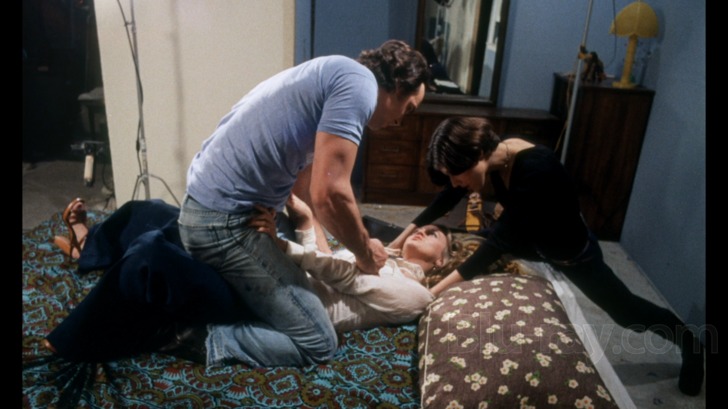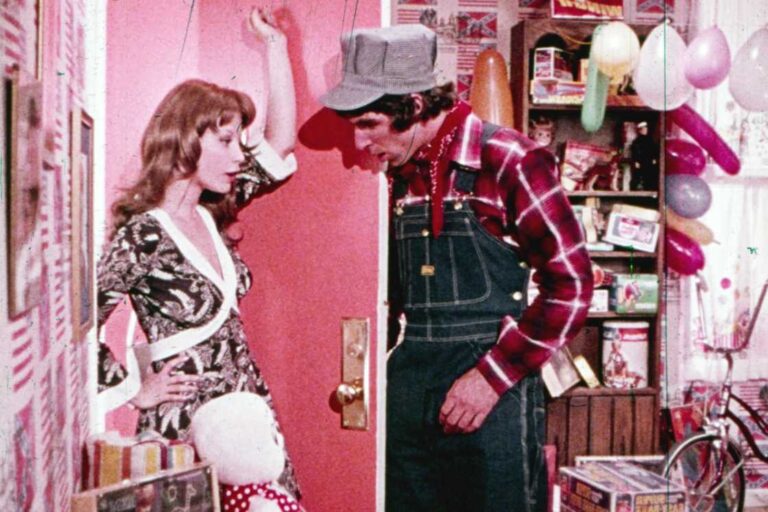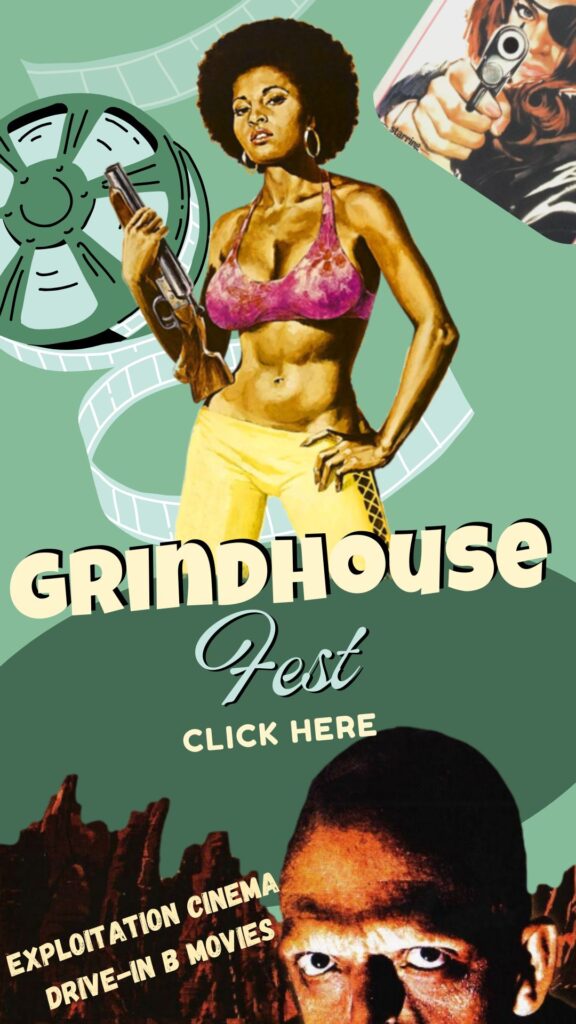-Grindhouse Fest is the special section in Celluloid Dimension where you can discover all the goodies… and baddies from the golden age of exploitation cinema. Have fun!
Directed by Michael Findlay and Simon Nuchtern (additional footage)
Written by Michael Findlay
Starring:
- Margarita Amuchástegui as Angelica
- Ana Carro as Ana
- Liliana Fernández Blanco as Susanna
- Roberta Findlay as Carmela (voice)
- Alfredo Iglesias as Horst’s father
- Enrique Larratelli as Satan
- Mirta Massa as Terry London
Rating: (NO RATING)
“The bloodiest thing that ever happened in front of the camera! The movie that could only be made in South America… where life is cheap.” So boasts the grotesquely sensationalist tagline of Snuff—a film as notorious for its marketing as for its content. Of the many titles blacklisted during Britain’s infamous Video Nasties panic of the 1980s, Snuff remains among the most reviled, not simply for its crude, disreputable imagery, but for the elaborate publicity machine that propelled it into infamy. The film never quite lives up to the promise—or threat—of its advertising, yet it managed to draw the ire of feminist protestors, incite disgust among casual viewers, and even provoke a federal investigation by the FBI. That a low-budget exploitation film could ignite such a cultural firestorm speaks volumes about the volatile climate of 1970s American cinema.
Snuff is the movie that infuriated radical feminists, triggered picket lines outside theaters—some sincere, others orchestrated—and conjured a moral hysteria far more compelling than the film itself. One might expect, from such a maelstrom of controversy, a genuinely harrowing or innovative cinematic experience. Unfortunately, the film is neither. As an exploitation object, it’s more forgettable than fearsome. And yet, its scandalous context grants it a peculiar importance. If not a masterpiece, Snuff is at least a historical artifact—an audacious footnote in the annals of exploitation cinema, and a springboard for ontological questions about authenticity, deception, and the ethics of spectatorship.
In the realm of micro-budget exploitation from the 1960s and ’70s, Michael and Roberta Findlay were infamous pioneers. Though hardly auteurs, they excelled in one essential skill: selling sleaze. Their films were a mainstay of New York’s grindhouse circuit, where the most jaded audiences gathered in search of “roughie” thrills. And yet, it was Snuff—alongside their earlier Flesh trilogy—that launched them into the mainstream spotlight, albeit infamously. Conceived during the rise of the snuff film urban legend, Snuff was filmed in South America as a lurid, Manson-esque melodrama on a shoestring budget. The original title was Slaughter, but the filmmakers’ opportunistic rebranding tapped directly into the era’s moral panic.
The narrative itself is pure exploitation boilerplate, laced with soap opera melodrama. Its villain, Satan—clearly modeled on Charles Manson—is a deranged cult leader who manipulates beautiful young women into carrying out ritualistic murders, including the killing of a pregnant actress. Shot with clumsy zeal and performed with laughable sincerity, the film is a mess, but a rhythmic one. Its anti-aesthetic camerawork and wooden performances never fully collapse under their own ineptitude; in fact, there’s a certain grim vitality to its trashy energy. Despite its ambition to shock, the film is more accurately a work of sexploitation than horror—crudely titillating, occasionally absurd, and intermittently amusing.
The true flashpoint—the moment that transformed Snuff into a cultural lightning rod—comes in its final minutes. This notorious coda was not directed by the Findlays but by Simon Nuchtern, an independent filmmaker who filmed the sequence in Carter Stevens’s porn studio in New York. Tacked onto the end of the original feature, this segment attempts to simulate an actual snuff murder. After the “film within the film” concludes, a new sequence unfolds: a female crew member is lured behind the scenes and subjected to a gruesome, voyeuristically filmed mutilation and death. The abrupt tonal and spatial shift—separate cast, distinct setting, divergent production values—only heightens the scene’s disorientation. The effect is deliberate: a meta-cinematic sleight of hand designed to trick audiences into questioning the boundary between fiction and reality. The tactic worked. Outrage followed.
What’s remarkable about Snuff is not what’s on screen, but what it provoked behind it. Its final act is a textbook study in cinematic manipulation—a fabricated fragment that pushed the audience to the brink of belief. The stunt would be echoed, decades later, in the viral success of The Blair Witch Project—a different film, but one that likewise weaponized ambiguity and the illusion of realism for massive commercial gain.
Snuff is, in some ways, unrateable. It resists conventional critical categories not because it transcends them, but because it was never designed with artistic merit in mind. And yet, to dismiss it outright would be to miss its strange cultural value. I admire it—perhaps too much—not for its craftsmanship, but for its audacity. That final grotesque tableau, though crudely executed, suggests something more than provocation. It is the distillation of exploitation cinema’s pathology: its voyeurism, its appetite for transgression, its need to deceive. The gore may be unconvincing, but the horror lies in the act itself—the cold, affectless machinery of simulated violence, the ghoulish complicity of the camera. In that final scene, Snuff achieves something rare: a moment of pure, unsettling perversity that lingers, not in the eye, but in the mind.









